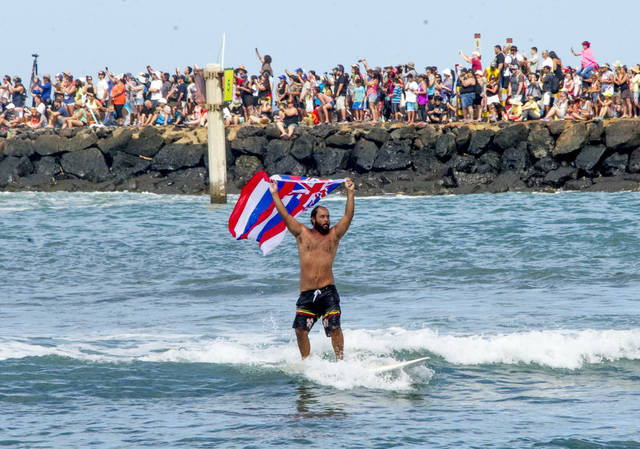Lasting pledge to nurture the health of our lands and oceans

CRAIG T. KOJIMA / CKOJIMA@STARADVERTISER.COM
Now that Hokule‘a’s Worldwide Voyage is ending, our next journey begins: keeping our Promise to the Pae ‘Aina.
Before Hokule‘a departed on her Malama Honua Worldwide Voyage in 2014, the Polynesian Voyaging Society gathered with more than two dozen natural resource management organizations, spanning the federal, state, nonprofit, local government and private sectors. Together on April 23, 2014, they created the “Promise to the Pae ‘Aina o Hawai‘i,” a pledge by the stewards and navigators of Hawaii’s environment to our Hawaiian archipelago, to improve the health and well-being of our islands and surrounding oceans. Today, over 60 organizations and 150-plus individuals have committed to and are actively supporting this promise.
The promise’s goal was that when Hokule‘a returned, our islands and the ocean that joins them would be healthier than when the voyaging canoe departed in 2014. On the shoulder of this promise, the collective group developed five commitments with specific, measurable and time-bound targets. Like Hokule‘a, they serve as a platform that brings us together, as a vehicle that propels us to work toward shared destinations.
Now Hokule‘a has returned and the achievements of the promise are well underway. In September 2016 at the opening of the IUCN World Conservation Congress, Gov. David Ige announced the state’s commitment to effectively managing 30 percent of Hawaii’s nearshore waters in the main Hawaiian islands and 30 percent of Hawaii’s most critical watersheds by 2030. These targets reflect the collective commitment of diverse groups working with the state to meet a common goal.
RELATED
>> After 42,000 miles, more to sail
>> Voyage inspired many worldwide, and the mission’s just begun
Malama Honua shows us a community can band together to create significant, important change that benefits our children and our future. A commitment to Malama Honua (taking care of the Earth) was one of the most important goals of the worldwide voyage. The health and well-being of our people are inextricably intertwined with the health and well-being of our environment. Hawaii and the world face enormous environmental challenges, but by working together, they can be overcome.
Don't miss out on what's happening!
Stay in touch with breaking news, as it happens, conveniently in your email inbox. It's FREE!
Climate change, global warming, ocean acidification and other problems are heavily impacting Pacific Islanders who, although they did not create the situations, are among the first to suffer their effects.
Pwo navigator Nainoa Thompson says in his early days of voyaging, they could throw out fishing lines in the morning and pull them in, still in the morning, because enough fish to eat had been caught. Now, he says, they see many more fishing boats and far fewer fish. On a 2008 training voyage to Palmyra, they traveled 1,100 nautical miles without catching a single fish. Seabirds are fewer now, too, he says, which makes traditional wayfinding more difficult.
Critical to the concept of the Malama Honua Worldwide Voyage was the idea that people will fight to protect what they care about — but they cannot take care of what they do not understand.
By traveling the world’s oceans and discussing our planet’s environmental problems with people, organizations and governments, Malama Honua has elicited a human reaction. People are uniting to address our Island Earth’s challenges.
Crew members have helped build understanding and unleash greater possibilities for innovations and protection by connecting a caring community, and weaving a lei of hope across the globe.
Now that Hokule‘a’s Worldwide Voyage is ending, our next journey begins: keeping our Promise to the Pae ‘Aina. As the promise states, a perpetual voyage is needed to protect and care for Hawaii through lifelong learning and active conservation and education. Its legacy is to set the course for generations to come — a new Hawaiian renaissance in caring for our place, be it an island, a continent, or a planet.
The partnership forged between so many diverse organizations is unprecedented, and necessary. We all feel a sense of urgency and responsibility to find and lead the way toward a healthier, safer future. By continuing to work together, we know we can arrive at our shared destination: an environment and a world that is worthy of our generations yet to come.
Mitch D’Olier is with the Castle Foundation; Sam ‘Ohu Gon is with The Nature Conservancy; Aulani Wilhelm is with Conservation International.



